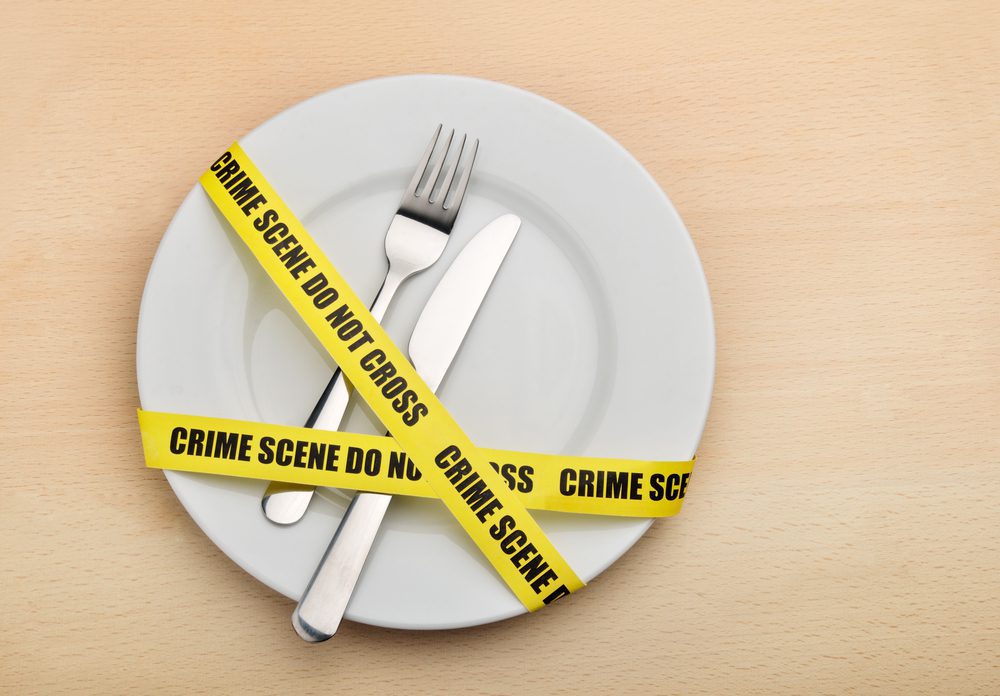
The seemingly innocent white foods filling American pantries have become a serious concern among leading health professionals and nutrition experts. Recent research has revealed an alarming connection between processed white foods and expanding waistlines, with these kitchen staples playing a significant role in the nation’s growing battle with weight gain, particularly stubborn belly fat. This discovery has prompted healthcare providers and fitness experts to call for a dramatic reduction of these foods in daily diets.
The science of white food and weight gain
The relationship between white foods and weight gain goes deeper than simple calorie counting. When consumed, these processed foods undergo a rapid conversion to glucose in the bloodstream, triggering a cascade of metabolic responses that promote fat storage. Research from leading nutrition institutions shows that individuals who consume high amounts of processed white foods experience up to 40% more abdominal fat accumulation compared to those following whole food diets.
Understanding white food offenders
Refined flour products represent the first major concern in the battle against white foods. White bread, pastries, and processed baked goods undergo extensive processing that strips away fiber and nutrients, leaving behind what nutritionists call “empty calories.” The body rapidly converts these foods to sugar, leading to insulin spikes that promote fat storage, particularly around the midsection. Despite their popularity, traditional white rice and pasta contribute significantly to weight gain. The refining process removes the fiber-rich outer layers, creating products that digest quickly and leave you hungry shortly after eating. Studies show that replacing these foods with whole grain alternatives can reduce belly fat accumulation by up to 20%.
Hidden in countless everyday products, refined sugar represents perhaps the most insidious white food threat. From breakfast cereals to salad dressings, this pervasive ingredient not only contributes to weight gain but also disrupts natural hunger signals, leading to overconsumption and increased belly fat storage. While salt itself doesn’t directly cause fat gain, excessive sodium intake leads to water retention and bloating, making the midsection appear larger. Additionally, high-sodium processed foods often contain other problematic white ingredients that contribute to weight gain.
The metabolic impact
The consumption of white foods creates a perfect storm for weight gain through multiple mechanisms. First, these foods cause rapid blood sugar spikes, leading to increased insulin production. This hormone not only promotes fat storage but also makes it particularly difficult to burn existing fat stores, especially around the abdomen. Furthermore, the quick digestion of these foods disrupts natural appetite regulation, leading to increased hunger and cravings. This creates a vicious cycle of overconsumption and energy crashes that many find difficult to break.
Breaking free from white food dependence
Strategic substitutions form the cornerstone of eliminating white foods from your diet. Replace refined grains with whole grain alternatives rich in fiber and nutrients. Ancient grains like quinoa, amaranth, and buckwheat provide sustained energy without the dramatic blood sugar fluctuations associated with their white counterparts. Transition to natural sweeteners like stevia, monk fruit, or small amounts of raw honey. These options satisfy sweet cravings without triggering the same metabolic chaos as refined sugar. Incorporate high-fiber foods that slow digestion and promote feelings of fullness. Vegetables, legumes, and whole fruits help stabilize blood sugar levels while providing essential nutrients for optimal health.
Creating lasting change
Successfully eliminating white foods requires developing mindful eating practices and understanding the psychological aspects of food choices. Learn to recognize true hunger signals and make conscious food choices. This approach helps break emotional eating patterns often associated with processed white foods. Prepare meals in advance to avoid falling back on convenient but problematic white food options. This proactive approach makes it easier to maintain healthy eating habits during busy times. Develop skills to identify hidden white food ingredients in processed products. Many manufacturers use alternative names for sugar and refined grains, making it crucial to read labels carefully.
Building sustainable habits
The journey to eliminating white foods requires patience and consistency. Rather than attempting dramatic overnight changes, focus on gradual modifications that lead to sustainable results. Start by replacing one problematic food at a time, allowing your palate and habits to adjust naturally. Research shows that individuals who take this measured approach experience more lasting success in reducing belly fat and maintaining a healthy weight. Additionally, they report fewer cravings and more stable energy levels throughout the day.
Creating an environment that supports healthy food choices proves crucial for long-term success. Remove problematic white foods from your home and replace them with nutrient-rich alternatives. Having healthy options readily available makes it easier to make better choices. Share your goals with family and friends, and consider finding like-minded individuals who share your commitment to healthy eating. Social support significantly increases the likelihood of maintaining dietary changes. Consider working with a registered dietitian or nutritionist who can provide personalized advice and help navigate challenges during the transition away from white foods.













